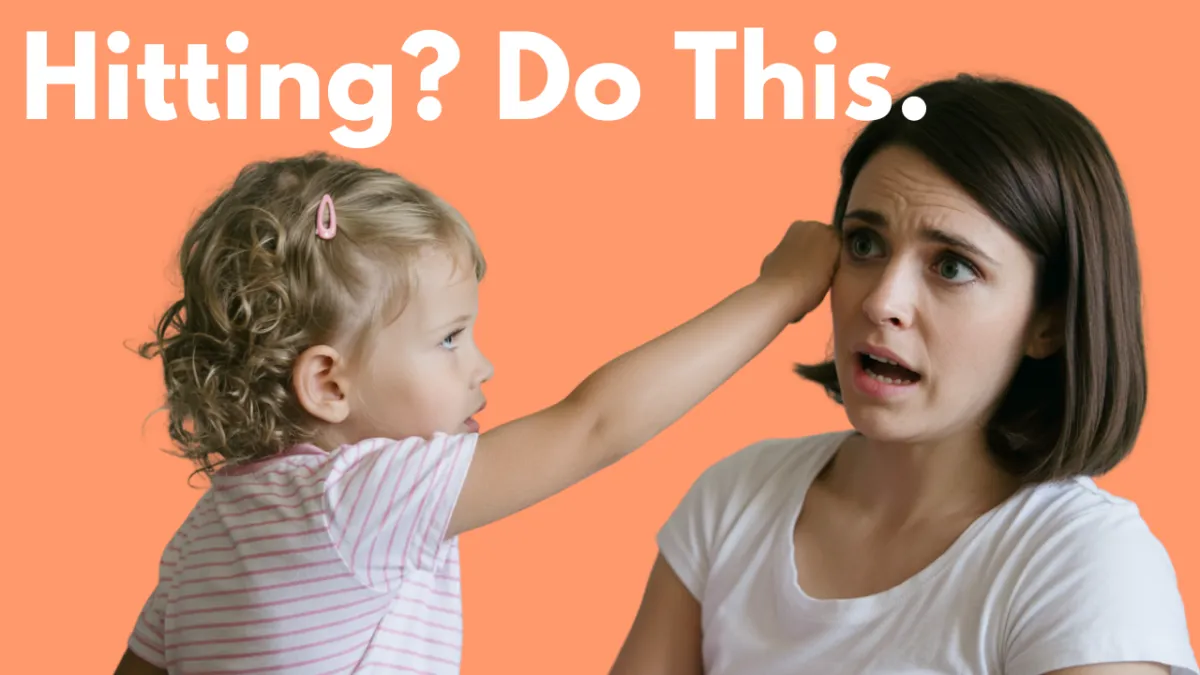
What To Do When Your Child Hits, Kicks, or Throws Things


Let’s be real... when your toddler kicks you, throws a toy at your head, or lashes out during a meltdown, your first instinct might be to yell, punish, or lock yourself in the bathroom with snacks and a prayer. (No judgment—we’ve all been there.)
But here’s the truth: there is a better way and it’s backed by neuroscience, not guesswork.
Why Kids Hit, Kick, and Throw Things
According to child development research, physical aggression peaks between ages 2 and 4. That’s not because your child is “bad” or “manipulative”, it’s because their prefrontal cortex, the part of the brain responsible for impulse control, is still under construction.
So when they lash out physically, it’s often because:
Their nervous system is in fight-or-flight mode
They feel overwhelmed and don’t know how to self-regulate
They literally cannot access better coping tools in that moment
And here’s what most parents don’t realize: punishment actually makes it worse.
The Wrong Move: Punishment
When we respond to aggression with yelling or harsh discipline, we don’t teach emotional control—we just escalate the threat. That kicks their nervous system into survival mode and shuts down their ability to learn.
So what do you do instead?
What Actually Works: The Evidence-Based Approach
1. Set the Boundary Calmly and Clearly
Say:
“I see that you’re upset. I’m here if you need me, but you may not hit.”
This language is firm, respectful, and emotionally steady. It reminds your child that their feelings are allowed, but hurting others isn’t.
2. Protect Everyone’s Safety
Depending on the situation, you might:
Gently block or restrain their hands
Step back out of range
Guide them to a calm space while staying emotionally available
Safety first. Always.
3. Look Beneath the Behavior
Your child isn't trying to be difficult, they're dysregulated.
Think of it this way: a child in meltdown mode is asking for help in the only way they know how. By staying regulated yourself, you're teaching them what real calm looks like.
Why This Approach Matters
When you hold both love and limits—when you stay calm while your child loses control, you do something powerful:
✔️ You model emotional strength
✔️ You protect the connection
✔️ You help wire their brain for future self-regulation
Research shows that children raised with calm, firm boundaries develop stronger self-control than kids raised with either harsh punishment or permissiveness.
Final Reminder: It’s Not About Instant Obedience
Your goal isn’t to force compliance in the heat of the moment.
It’s to raise a child who chooses cooperation later because they’ve experienced what it feels like to be respected, even when they’re at their worst.
And that’s the kind of emotional foundation that lasts a lifetime.
Want more tools like this? Check out the Better Behavior Blueprint for step-by-step support in creating a calm, connected, and respectful home without yelling, threats, or giving in.
